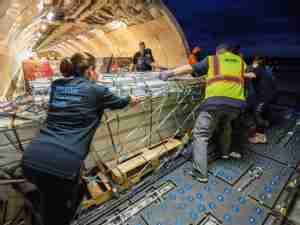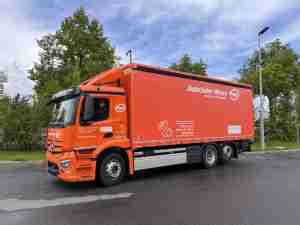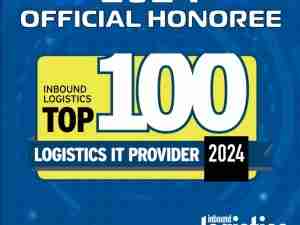 JC: What do you view as NDTA's most significant role in supporting Department of Defense (DOD) distribution transformation efforts?
JC: What do you view as NDTA's most significant role in supporting Department of Defense (DOD) distribution transformation efforts?
KW: Working with DOD, NDTA provides a window to industry ' an opportunity for DOD to meet, talk with and learn from what's happening on the commercial side in terms of best practices. On the flip side, NDTA provides industry a voice in developing DOD's plans, practices, policies and procedures. NDTA works to allow each segment the ability to learn from each other to achieve overall success.
JC: What do you believe are the most significant distribution improvements of the last year?
KW: I believe the most significant event occurring since last year's conference is the pending DTCI contract award' an effort by USTRANSCOM to have a third party manage all aspects of certain transportation requirements. Other than that, I'm pleased to say that NDTA's partnership with industry resulted in the discussion, development and pursuit of two important DOD initiatives. Commercial First provides an opportunity for the maritime industry to compete for the movement of DOD freight, and Annual Fixed Buy gives air carriers advance notice of DOD's upcoming business requirements so they can appropriately size their fleets for potential work; while air carriers must still compete for the business, the program provides them a better idea of the overall size of annual DOD buy of airlift capability.
JC: What are the greatest industry changes you've seen over your 40-year career?
KW: The greatest changes I've seen during my career involve consolidation ' not only in the military, but in industry - through mergers and acquisitions. Industry deregulation contributed to this, as it created a more competitive environment, and I believe the consolidation trend will continue as change is a constant. When organizations become larger, they are more capable of performing a wider scope of functions and activities. Increasingly, they grow from providing a segment of the distribution system to providing end-to-end service. Competition is such that organizations have to be bigger to compete, and the resulting economies of scale allow them to remove redundancies and multiple layers. Technology plays a part in it too, in that it provides much faster response time throughout all areas of operations. Getting back to this year's 'Better Together' theme ' companies and the military undoubtedly find value in collaboration and strategic partnerships.
JC: How does NDTA attract younger and more diverse interest in the industry?
KW: Attracting younger and more diverse interest is very important to NDTA and we've been successful in doing so through our A-35 program ' available within our chapters throughout the year and highlighted at our Forum. A-35 targets members age 35 and younger. Some things we do under the program include our Young Leaders Session ' a separate and dedicated event at our annual conference ' that allows our younger members to share with other attendees real life experiences in the Service, on the warfront, and within the industry. This is also the fifth year NDTA is offering its mentoring program, which pairs our younger members with senior members to discuss careers, seek advice and counsel. Finally, we strive to provide our younger members an opportunity to gain visibility at our Forum so they can better network, relate and form lasting relationships. As an example, we present Junior Leadershi









